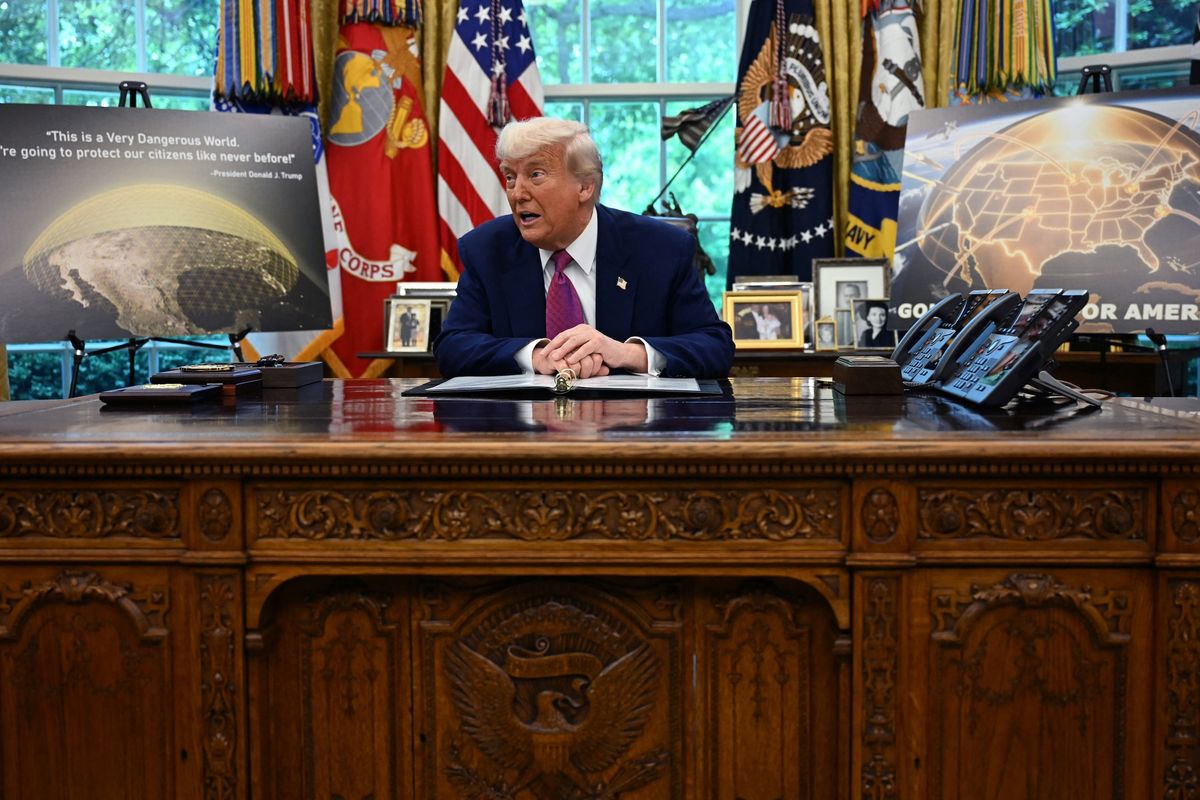OPINION — On July 1, one month before his scheduled retirement, Air Force Chief of Staff General David L. Goldfein gave a vivid description of Pentagon planning to deter great power warfare after 2030 or, if that failed, to fight and win against China, Russia or any other country.
During an hour-long, virtual interview with Brookings Institute specialists, Goldfein drew a sharp distinction between the forces that were needed for fighting terrorism over the past 19 years since 9/11, and what the Trump 2018 National Defense Strategy saw as growing threats from major rivals like China and Russia.
Goldfein referred to the many war game scenarios the U.S. has played out against China saying, “for many years they have not ended well.” That forced Pentagon planners to go back to the drawing board and, he said, “take a look at what kind of a joint force we had to field that would turn these war games around.”
Based on best assessments of the threat and the directions China and Russia were moving toward, and after some 2,000 iterations of various U.S. force elements, “we came up with a force that did quite well, for the first time…that I had seen in many years,” Goldfein said.
That future force required four key areas for new investment, according to Goldfein.
The number one requirement was more funding for space.
“It was never a guarantee that if you moved first in space that you were going to win…But in every (war) game we played, if you were the second mover, you were guaranteed to lose,” he said.
So the first level of investment had to be toward a goal of regaining space superiority.
Second, he said, was “connectivity,” to invest in “connecting the force in ways it currently is not connected.” By that he meant connecting electronic weapons systems so that a new, F-35 fighter is linked automatically to a 100-year-old B-52 bomber; and to an X-37 space plane in low earth orbit; and to a Marine air-ground task force; and to an Army brigade combat team; and to a tactical Navy submarine off an adversary’s shore.
“Today, our systems are not optimized, they won’t operate simultaneously together in all-domain operations,” he said.
The third investment target required choosing between emphasizing stand-off or penetrating weapons. The solution, Goldfein said, was “the hybrid, approach. That said there are some portions of the joint team that have to penetrate, persist, proliferate, protect and punish the adversary. And then there is some portion that has to stand off and be outside the threat area.”
Getting that hybrid force right was the third element for investment.
The final pillar for investment was protection for logistics. Goldfein said in the fight against terrorism that was never a real problem. In 2030, he said, “Assume logistics will be under attack, which is not what we have faced in the last 19 years…that [would be] a false assumption for future conflict.”
“Investing in those four areas could actually turn the outcome of those war games around in the most stressing scenarios,” he said.
Today’s problem, according to Goldfein, is where to find the funds since the future force is “aspirational,” and involves things such as “multi-domain constructs” and “joint all-domain command and control,” which he termed the “currency of future warfare.”
Goldfein said he has spent time on Capitol Hill promoting the need to get rid of older, costly systems, “that don’t play well in that 2030 fight.” Goldfein calls them “trucks,” while promoting digital engineering and common data, in what he calls the new “highways.” He said he is “preaching highways in a truck town [Washington, D.C.], and I have yet to find a highways lobbyist, but I sure have found a lot of truckers.”
Looking back, Goldfein explained, “The days of sequential warfare, where we would come in as the air component and beat down the defenses, and build up naval and land forces over some period of time, then roll in with the land campaign, I think that is an outdated framework for future warfare.”
Looking forward he said, “The side that wins will have a couple of things. Number one, access to data information and [ability to] deny that to the adversary; and he will be operating at speeds that we have not had to operate in the last 19 years…Time is the key attribute that we are going to have to master.”
He said in the future, U.S. forces will have to “operate at machine speeds” so the enemy will not be able to prepare to react and thus not think of using military force. That will be deterrence in the 21st century, he said.
Digital engineering and data architecture, Goldfein said, would be the basis for so-called “game changers,” such as Artificial Intelligence (AI), hypersonics, directed energy and quantum. But, Goldfein said, “You’ve got to get this foundational step right,” pointing out that “Google did not become an AI company until they made their investment to get their data architecture right.”
The Air Force chief described an unclassified demonstration of how a 2030 attack could work, with all elements on a common digital architecture and framework so that there is uninhibited data access and communication among all military systems.
He said an enemy navy vessel was in the Gulf of Mexico. A U.S. space surveillance asset located the ship, but could not get a decision ID or a quality coordinate fix on the target. That data it gathered was passed to on to a penetrating ISR asset, whose sensors identified it with 95% confidence and set its coordinates. That data was passed to Joint C2 (command and control), which had built in already a commander’s intent to exercise authority for non-kinetic to kinetic responses. It chose an Aegis cruiser, sent the data to the Aegis cruiser, whose team validated it and took the shot.
“What’s most important about the kill chain I have just described,” Goldfein said, “is that the first human in that loop was the Aegis Cruiser shooter. Everything else occurred at machine speeds, and the only time it took to close that kill chain was the time it took for the penetrating ISR to get close enough to use its sensors.”
That demonstration “gives you a sense of the speed of warfare that we have got to achieve,” he said, adding that “much of what we are doing here is in the classified realm.”
He said that when he talks to Congress about joint all-domain operations and joint all-domain command and control this is not about past big screens and big headquarters, “this is distributed, it’s resilient, it has multiple pathways to communicate, and allows us to close thousands of kill chains in hundreds of hours.”
Perhaps most important and most interesting in what Goldfein said about this new, speed-driven, 2030 warfighting system was that it “takes humans from being in the loop, to on the loop, where we need them to only do what humans need to do.”
There was for me another memorable statement Goldfein made during the Brookings event.
It came when he was asked about nuclear weapons. Goldfein brought up Russian military leaders, including Chief of the General Staff Valery Gerasimov who is among those who, as he put it, have been speaking openly about the possible introduction of tactical nuclear weapons in what began as a potential conventional war in Europe.
Goldfein said, “I believe there is no such thing [referring to tactical nuclear weapons]. Once you go nuclear you’re no longer tactical.” In saying that openly and directly, Goldfein reflected what has been apparent for years – and shown time after time in so-called war games — that first use of tactical nuclear weapons on the battlefield would mean the use of more than one, assuming of course it’s not just a warning shot that does no harm.
Goldfein’s statement, in my view, recognizes escalation would follow and puts into question the Trump administration’s rational for introducing low-yield nuclear warheads on strategic, D-5, sub-launched missiles, which were justified as the answer to Russian talk of the possible use of tactical nuclear weapons in Europe.
Read more expert-driven national security insight, perspective and analysis in The Cipher Brief












